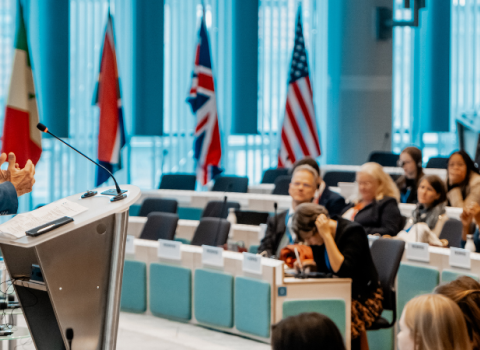A new strategy outlines area where the EU should invest more money and resources over the coming decade for climate change mitigation

More impact is needed from the EU’s Knowledge and Innovation Community on Climate (Climate KIC) if the EU is to tackle climate change effectively, according to a new strategy published by the European Commission on Wednesday.
The climate adaptation strategy outlines the areas where the EU should invest more money and resources over the coming decade to prepare for unavoidable effects of climate change. According to the document, the EU should speed up the rollout of technologies and innovations that help mitigate the effects of rising temperatures, deforestation, soil erosion and limited access to fresh water.
“The new climate adaptation strategy equips us to speed up and deepen preparations. If we get ready today, we can still build a climate-resilient tomorrow,” said Frans Timmermans, the EU’s executive vice-president for the European Green Deal.
The document says the EU’s research programmes, Horizon Europe and its predecessor Horizon 2020, together with the Climate KIC, “already support adaptation innovation, but recent analysis shows the need to step it up.”
According to a study by the World Bank cited by the Commission, the number of climate adaptation inventions in 2015 was roughly the same as in 1995, despite the fact that innovation on climate mitigation nearly doubled over the same period. The study also found that only a few adaptation inventions are transferred across borders, and there is virtually no transfer of patented knowledge to low-income countries.
The Climate KIC is one of the eight large-scale partnerships between higher education, business and research organisations, set up under the umbrella of the European Institute of Innovation and Technology (EIT). It brings together stakeholders to identify and scale-up innovations that could help the EU mitigate and adapt to climate change.
In January, EU policymakers agreed on a new legislation for the EIT which gives its eight KICs more flexibility and control over their funding. The new law allows the KICs to make long-term investment plans and cut red tape by replacing annual grants with multi-annual agreements.
To keep receiving financial support from the EU, the KICs are expected to show better results. The innovation partnerships will receive EU money based on performance evaluations that emphasise their ability to attract more private investors.
It is unclear whether the Climate KIC will allocate more resources to climate adaptation technologies and innovations. The EIT did not respond to a request for comment.
In parallel with the Climate KIC, Horizon Europe as a whole is also set to contribute significantly to the field. One of its proposed moonshot research missions will be on, ‘Adaptation to Climate Change, including Societal Transformation.’ The Commission hopes the research mission will generate ideas and technologies that can be scaled up and rolled out in Europe and beyond. The climate mission aims to support 200 communities to develop adaptation innovations and scale up 100 demonstrations of climate resilience.
Horizon Europe will also fund research missions on soil health, climate-neutral cities, and oceans, which are also directly relevant to action on adaptation.





 A unique international forum for public research organisations and companies to connect their external engagement with strategic interests around their R&D system.
A unique international forum for public research organisations and companies to connect their external engagement with strategic interests around their R&D system.